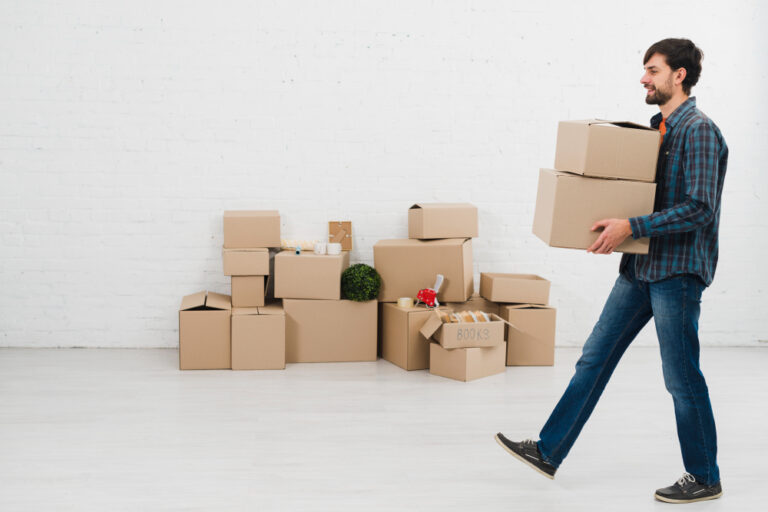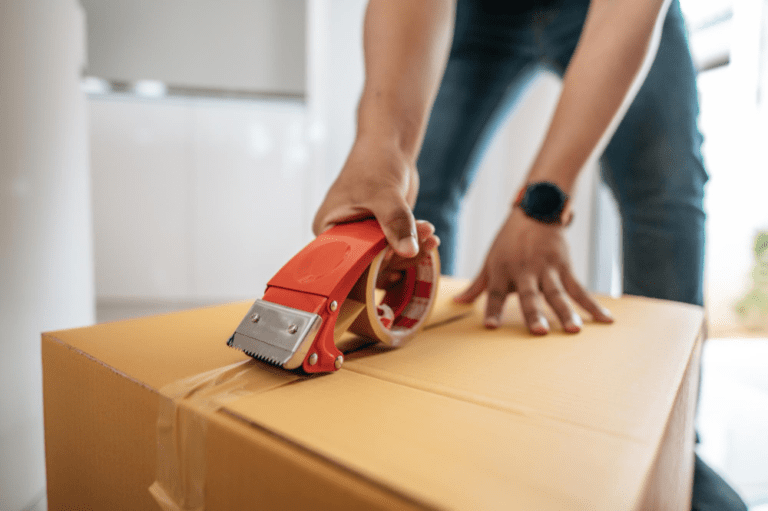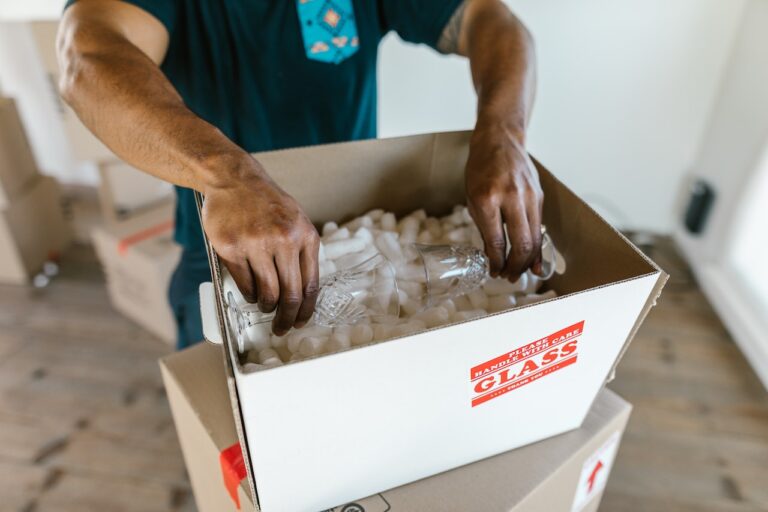Moving homes can be an exhilarating experience, offering a fresh start and a new environment. However, it often comes with the realization of just how many items we’ve accumulated over the years. Among these items, there are bound to be some that we no longer need or want.
Instead of lugging them to your new place or discarding them, why not consider a more altruistic approach? Donating unwanted items not only lightens your moving load but also provides assistance to those in need.
In this comprehensive guide of Friends Moving, we’ll delve into the steps on “how to donate unwanted items before moving.” Whether you’re looking to declutter or simply want to make a positive impact, this article will offer valuable insights to help you navigate the donation process seamlessly.
The Importance of Decluttering Before a Move
Moving to a new place is not just about transporting belongings from one location to another. It’s also an opportunity for a fresh start. One of the most transformative steps in the moving process is decluttering.
By letting go of items that no longer serve a purpose in our lives, we pave the way for a more organized and streamlined move. Moreover, the act of donating these items can have profound effects, both for the individual and the broader community. Here’s why decluttering before a move is so essential:
- Reduced Moving Costs: Fewer items mean fewer boxes, less packing material, and potentially a smaller moving truck. This can translate to significant savings.
- Less Stress: With fewer items to pack and organize, the moving process becomes much more manageable and less overwhelming.
- Time Efficiency: Packing can be time-consuming. By decluttering, you reduce the amount of time spent boxing up items.
- Fresh Start: Moving with only the items you truly need or love gives you a clean slate in your new home, free from clutter.
- Community Support: Donated items can be a lifeline for those in need, providing essential goods to individuals and families.
- Environmental Impact: Donating items means fewer things end up in landfills, promoting a more sustainable and eco-friendly move.
- Emotional Well-being: The act of letting go can be therapeutic. It allows for personal growth and the emotional satisfaction of helping others.
How to Sort and Identify Unwanted Items
Embarking on a move offers the perfect opportunity to assess our belongings and determine what truly holds value in our lives. Sorting through years, or even decades, of accumulated items can be daunting. However, with a systematic approach, it becomes easier to identify which items to keep, discard, or donate. Here are some strategies and criteria to help you effectively sort and identify unwanted items:
1. Set Clear Goals
Before diving into the decluttering process, it’s essential to establish what you aim to achieve. Whether it’s reducing your belongings by a certain percentage or ensuring you only move with essentials, having clear goals will guide your decisions.
Setting clear goals provides direction and purpose to the decluttering process. It helps you stay focused and ensures that you make decisions aligned with your moving objectives. For instance, if your goal is to downsize to a smaller living space, you’ll be more inclined to let go of bulky furniture or redundant items.
2. Use the Four-Box Method
This method involves having four boxes or bins labeled Keep, Donate, Trash, and Maybe. As you go through each item, place it in one of the boxes based on your immediate decision.
The Four-Box Method simplifies the decision-making process. By categorizing items immediately, you avoid the constant back-and-forth that can come with indecision. The “Maybe” box is particularly useful for items you’re unsure about, allowing you to revisit them later once you’ve gone through everything.
3. Ask the Right Questions
For each item, ask yourself: “Have I used this in the past year?” “Does it bring me joy?” and “Would I buy it again?”. If the answer is “no” to these questions, it might be time to let go.
Asking these critical questions helps you evaluate the true value and utility of each item. Items that haven’t been used in a long time or don’t evoke positive feelings are prime candidates for donation or disposal.
4. Tackle One Room at a Time
Instead of getting overwhelmed by the entirety of your home, focus on decluttering one room or area before moving on to the next.
Breaking the task down room by room makes it more manageable. It allows you to see tangible progress, which can be motivating. Plus, it ensures that no area is overlooked in the decluttering process.
5. Consider the Condition
When identifying items to donate, ensure they are in good condition. Items that are broken, stained, or worn out might be better suited for recycling or disposal.
Donation centers often have criteria for the items they accept. By ensuring that you’re donating items in decent condition, you’re providing something valuable to someone else. It’s also a sign of respect to the organizations and individuals who will receive your donations.
6. Think of Functionality Over Sentimentality
While sentimental items hold emotional value, it’s essential to differentiate between those worth keeping and those that merely take up space.
It’s natural to form emotional attachments to items, especially those with memories attached. However, holding onto every sentimental item can lead to unnecessary clutter. Consider keeping only the most cherished items and finding alternative ways to honor memories, such as digitizing photos or repurposing materials.
7. Set a Time Limit
Allocate a specific amount of time for each decluttering session. This prevents fatigue and ensures you make decisions more efficiently.
Setting a time limit creates a sense of urgency, which can help in making quicker decisions. It also ensures that you don’t get burned out. Remember, decluttering is a marathon, not a sprint. By pacing yourself, you’ll be more effective in sorting and identifying unwanted items.
Read More: How to pack mugs for moving
Where to Donate Unwanted Items
As you prepare for your move and declutter your space, you might find yourself with a pile of items that are still in good condition but no longer serve a purpose in your life. Donating these items is a wonderful way to give them a second life and support those in need. But where should you donate them? Here’s a guide to help you find the right place for your unwanted items:
- 1. Local Thrift Stores: Many communities have thrift stores that accept donations and sell them at discounted prices. Proceeds often support local charities or community programs.
- 2. Charitable Organizations: National organizations like Goodwill, Salvation Army, and Habitat for Humanity have drop-off locations in many cities and offer pick-up services for larger items.
- 3. Schools and Educational Centers: Old books, art supplies, and educational materials can be donated to local schools, libraries, or community centers.
- 4. Shelters and Transitional Homes: Clothing, toiletries, and household items can be donated to shelters that support the homeless, women in crisis, or other vulnerable populations.
- 5. Hospitals and Care Facilities: Some hospitals accept toy donations for pediatric wards, while care facilities might appreciate books, games, or entertainment items.
- 6. Community Centers and Churches: Many community centers and churches run donation drives or have ongoing programs that support the less fortunate.
- 7. Online Platforms: Websites like Freecycle or Facebook Marketplace have “free” sections where you can list items for others in your community to claim.
Donation Guidelines and Best Practices
Donating unwanted items is a commendable act, but it’s essential to ensure that your donations are useful and meet the standards of the receiving organization. Here are some guidelines and best practices to consider when preparing your items for donation:
- 1. Check the Condition: Ensure that items are clean, functional, and in good condition. Avoid donating broken, stained, or excessively worn items.
- 2. Understand Restrictions: Some organizations have specific guidelines about what they can and cannot accept. For instance, many places won’t take old mattresses or certain electronics.
- 3. Keep Hygiene in Mind: For items like toiletries, ensure they are unopened and unused. Used clothing should be washed before donation.
- 4. Organize and Label: If donating multiple items, consider sorting them into categories (e.g., clothes, books, kitchenware) and labeling boxes or bags accordingly.
- 5. Include All Parts: For items that have multiple components, like board games or electronics, ensure all parts are included and, if possible, provide instructions.
- 6. Get a Receipt: Many organizations will provide a receipt for your donated items, which can be used for tax deductions.
- 7. Consider Seasonality: Some items, like winter coats or holiday decorations, might be more useful to organizations at specific times of the year.
How Friends Moving Can Assist
Beyond our core moving services, we are committed to assisting our clients in the decluttering and donation process, ensuring a smoother and more meaningful move. Here’s how Friends Moving can support you:
1. Personalized Consultation
Friends Moving offers personalized consultations to understand your specific needs and guide you through the decluttering process.
During the consultation, our experienced team will assess the volume of items you have and provide tailored advice on what to keep, discard, or donate. This initial step ensures that you have a clear roadmap for your decluttering journey.
2. Donation Coordination
We have partnerships with local charities and can coordinate the pick-up and drop-off of your donated items.
Understanding that the donation process can be time-consuming, Friends Moving leverages its network of charitable organizations to streamline the process. Whether it’s scheduling pick-ups or finding the right place for specialized items, we’ve got you covered.
3. Packing Services for Donations
Our team can assist in packing items designated for donation, ensuring they are organized and ready for their next home.
Proper packing is crucial, especially for donated items. Our trained staff will ensure that your items are packed securely and labeled appropriately, making the donation process seamless for both you and the receiving organization.
4. Donation Inventory Management
We provide inventory management services to keep track of items you’re donating, which can be useful for tax purposes.
Keeping a record of donated items can be beneficial, especially when it comes to tax deductions. Friends Moving offers a systematic inventory management service, ensuring you have a detailed record of all items given away.
5. Eco-Friendly Disposal
For items that aren’t suitable for donation, we offer eco-friendly disposal options to minimize environmental impact.
Friends Moving is committed to sustainability. Recognizing that not all items are fit for donation, we ensure that those items are disposed of in an environmentally conscious manner, be it through recycling or partnering with green disposal services.
6. Resources and Education
We provide clients with resources and educational materials on the benefits of decluttering and the impact of donations.
Knowledge is empowering. By offering resources and educational materials, we aim to inspire our clients to make informed decisions about decluttering and donating, emphasizing the broader positive impact on the community.
7. Post-Move Follow-Up
After the move, we follow up with clients to ensure the donation process was satisfactory and provide any additional assistance if needed.
Your journey doesn’t end once the move is complete. Friends Moving is dedicated to ensuring that every aspect of your transition, including the donation process, meets your expectations. Our post-move follow-up is a testament to our commitment to client satisfaction.
Read More: How to pack hanging clothes for moving
Environmental and Social Impact of Donating
Donating unwanted items not only benefits individuals but also plays a significant role in promoting environmental sustainability and fostering community development. Here’s how:
- 1. Waste Reduction: Donated items reduce landfill contributions, minimizing environmental waste.
- 2. Resource Conservation: Reusing items through donations conserves natural resources and energy.
- 3. Carbon Footprint Reduction: Fewer new products and waste lead to decreased greenhouse gas emissions.
- 4. Economic Boost: Donations support thrift stores and charities, promoting local economies.
- 5. Community Development: Donated items aid community programs, shelters, and schools, fostering growth.
- 6. Individual Well-being: Receiving donated items can uplift individuals, providing essential needs and boosting morale.
- 7. Promotes Recycling Culture: Donating encourages a culture of recycling and reusing, fostering a more sustainable society.
Conclusion
The act of donating unwanted items before moving is more than just a decluttering exercise; it’s a step towards a more sustainable and compassionate world. Friends Moving understands this profound impact and is committed to assisting clients in making their moves meaningful.
By choosing to donate, you not only lighten your load but also make a positive difference in the community. For more insights and support on your moving journey, Friends Moving is just a call away.
FAQs
Donating reduces environmental waste, supports community development, and aids individuals in need.
Yes, many charitable organizations provide receipts for donated items, which can be used for tax deductions.
Items should be in good condition, functional, and clean. It’s best to check with the receiving organization for specific guidelines.
Absolutely! Friends Moving offers services like donation coordination, packing for donations, and providing resources on the benefits of donating.
Items not fit for donation can be recycled or disposed of in an eco-friendly manner. Friends Moving can assist in ensuring responsible disposal.






